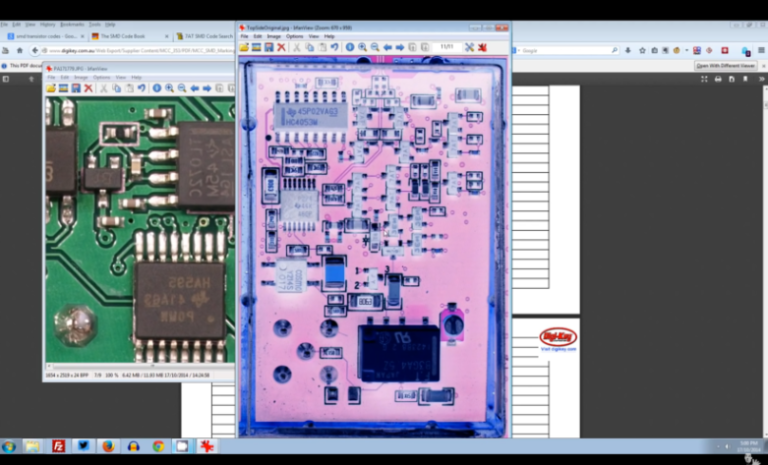Why Crystal Oscillators Should Not Be Placed Near PCB Edges
Abstract
Crystal oscillators (XTALs) are critical components in electronic circuits, providing precise clock signals for microcontrollers, processors, and communication modules. Their placement on a printed circuit board (PCB) significantly impacts performance, signal integrity, and electromagnetic compatibility (EMC). One key design rule is to avoid placing crystal oscillators near PCB edges. This article explores the reasons behind this guideline, covering mechanical stability, signal integrity, EMI susceptibility, thermal effects, and manufacturing considerations.
1. Introduction
Crystal oscillators generate stable frequencies essential for digital systems. Their performance depends not only on the crystal itself but also on PCB layout. Placing a crystal near the board edge can introduce multiple issues, including increased susceptibility to noise, mechanical stress, and electromagnetic interference (EMI). This article examines why PCB designers should avoid edge placement for crystal oscillators.
2. Mechanical Stability and Vibration
2.1. Susceptibility to Mechanical Stress
PCBs near edges are more exposed to mechanical stress during:
- Assembly and handling (e.g., depaneling, soldering, or mounting).
- Operation (e.g., vibrations in automotive or industrial applications).
Crystals are sensitive to mechanical stress, which can alter their resonant frequency or even cause cracks, leading to failure.
2.2. Depaneling Risks
If a PCB is panelized (multiple boards manufactured together), depaneling (cutting individual boards) near a crystal can induce stress, affecting its performance.

3. Signal Integrity and Noise
3.1. Increased Susceptibility to EMI
- PCB edges are more exposed to external electromagnetic interference (e.g., from power supplies, RF sources, or nearby devices).
- The crystal’s traces act as antennas, picking up noise, which can distort clock signals.
3.2. Crosstalk and Grounding Issues
- Edge placement may lead to improper grounding, increasing loop inductance and noise coupling.
- Nearby high-speed signals (e.g., USB, HDMI) can induce crosstalk, degrading clock accuracy.
3.3. Parasitic Capacitance and Impedance Mismatch
- The lack of a continuous ground plane near edges increases parasitic capacitance, altering crystal load capacitance and frequency stability.
4. Thermal Effects
4.1. Uneven Temperature Distribution
- PCB edges experience more temperature fluctuations due to:
- Heat dissipation differences (less copper for heat spreading).
- Exposure to ambient conditions (e.g., airflow, external heat sources).
- Crystals are temperature-sensitive; frequency drift can occur if thermal conditions vary.
4.2. Soldering and Reflow Concerns
- Edge components may experience uneven heating during reflow, leading to poor solder joints or thermal stress on the crystal.
5. Manufacturing and Assembly Challenges
5.1. PCB Warpage and Flexing
- Board edges are more prone to warping during manufacturing or operation, stressing the crystal.
5.2. Soldering and Rework Difficulties
- Edge components are harder to inspect and rework, increasing defect risks.
5.3. Compliance with Design Guidelines
- IPC and industry standards recommend keeping sensitive components (like crystals) away from edges to ensure reliability.

6. Best Practices for Crystal Placement
To mitigate these issues, follow these PCB layout guidelines:
6.1. Optimal Placement
- Place the crystal near the IC it drives (minimizing trace length).
- Ensure a solid ground plane beneath the crystal.
6.2. Proper Shielding and Routing
- Use guard rings or ground vias to reduce EMI.
- Keep high-speed signals away from crystal traces.
6.3. Mechanical Considerations
- Avoid placing crystals near mounting holes or board cutouts.
- Use strain relief if the PCB is subject to vibration.
7. Conclusion
Placing a crystal oscillator near a PCB edge introduces multiple risks, including mechanical stress, EMI susceptibility, thermal instability, and manufacturing challenges. By following best practices—keeping crystals centrally located, ensuring proper grounding, and minimizing noise coupling—designers can enhance signal integrity and system reliability. Adhering to these guidelines ensures robust performance in applications ranging from consumer electronics to industrial systems.






